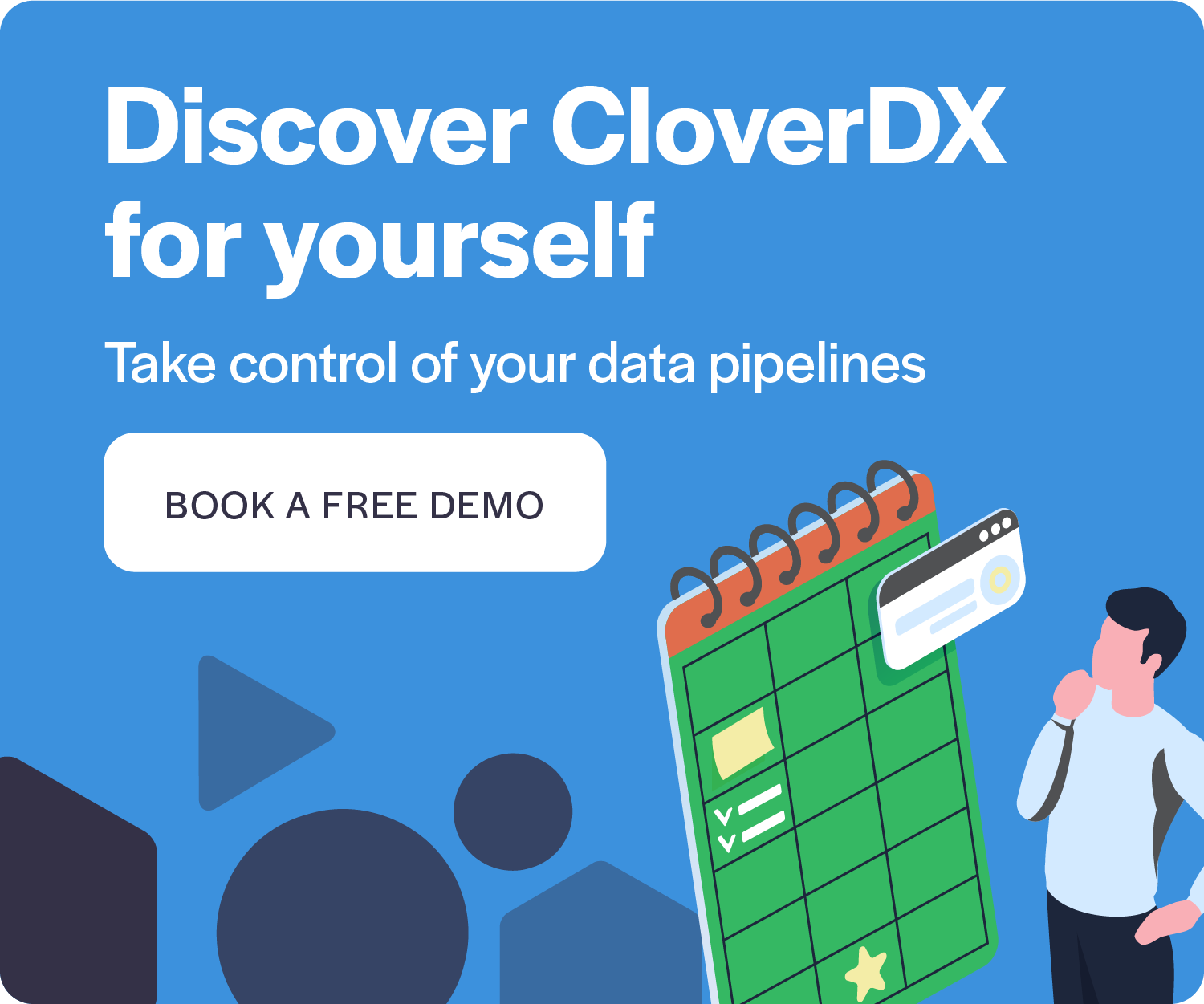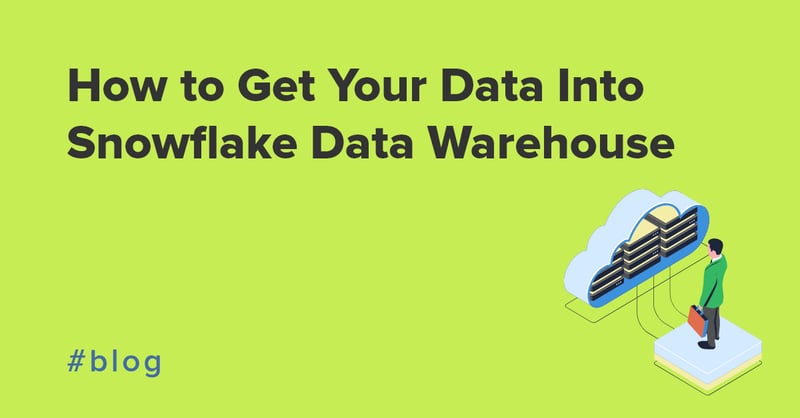Is your organization getting the most out of Snowflake?
As a popular data warehousing solution, Snowflake makes it easy for companies to scale into the cloud.
However, it’s not a panacea for all your data issues. It comes with some challenges that aren't obvious until you’re knee-deep into using it.
With this in mind, we’re going to explore four of the biggest challenges that can occur. We’ll also discuss how you can overcome them.
What is Snowflake?The four challenges we’ll cover are:
- Building data pipelines that aren’t ‘garbage in, garbage out’
- Establishing whether you need ETL or ELT
- Improving performance so you can load data rapidly
- Ensuring your data tools can meet your future needs
1. Building data pipelines that aren’t ‘garbage in, garbage out’
Snowflake's scalability is a tremendous benefit. You can grab near unlimited storage and compute at the touch of a button. This enables you to take on ever more exciting (read: resource-hungry) initiatives, such as machine learning and big data analytics.
The bad news is that this easy scaling also leads to some worrying issues.
Specifically, it’s all too easy to upload excessive amounts of data. As a result, you’ll overpay for your data storage. You'll also suffer from other problems besides. If you aren’t mindful of what you’re putting into the cloud, you'll inevitably load low quality data that hasn’t been effectively validated.
It’s much better to manage and validate the data quality going into your pipelines. This means you’ll get trustworthy, valuable, and actionable insights from the other side.
Using the CloverDX Validator tool can help here. It’s a comprehensive filtering tool that visually defines data quality rules. Crucially, Validator also helps you follow up on your data issues and gives you reasons why data failed.
This is hugely helpful. Why? Because if a validation tool doesn’t tell you why data is bad, it’s hard to follow up on. It just sits there waiting for IT teams to laboriously, manually to figure out what to do with it.
By focusing on data quality and preparing you for things going wrong (such as loading bad data), CloverDX enables you to resolve all the complexities and data headaches that you'll come across.
As an analogy, it’s like making a car that can work on all occasions. Yes, it’s straightforward for a car manufacturer to make something that works in ideal conditions. However, it’s difficult (but tremendously valuable) to build a car that works in all weather conditions. Just the same, you need data tools that will always get the job done, no matter the scenario.
2. Establishing whether you need ETL or ELT
Another challenge when working with Snowflake is making decisions around how your software will work with the data.
This means deciding whether you want to do extract, transform, load (ETL) or extract, load, transform (ELT). This is an important decision because it dictates when data transformations occur. At the risk of stating the obvious, with ETL, you’ll do the transformation before loading the data, and with ELT you’ll do the transformation after loading.
ETL has advantages that include:
- Low disruption. This is because the ETL process can run on a schedule that consistently updates a reporting data warehouse.
- Operational resilience. With ETL, you can catch issues before they enter data warehouses and create more complex downstream problems.
- Empowering business intelligence. As structured data is better understood by end-users, it can make sense to transform it earlier.
- Accessible to all teams. Most modern ETL software uses a graphical user interface. This makes it easier for less technical staff to collaborate.
- Handling complex projects. With ETL, you can profile and clean data in batches before it enters the data warehouse, helping break projects into manageable pieces.
However, ETL isn’t for every business. For example, it can be easier and more flexible to store unstructured data in the data warehouse before transforming it.
There's also inevitably a learning curve that comes with getting to grips with an ETL tool. You'll have to learn how to use both the data warehouse and the ETL tool. After all, it's in your tool that you'll be doing your data transformation work.
With CloverDX, you can orchestrate whatever kind of data pipeline you need to get your data into your data warehouse.
How CloverDX can help get your data into Snowflake3. Improving performance so you can load data rapidly
In 2021, cloud data centers will process 94 percent of workloads.
This points to the importance of efficiently loading data into the cloud.
The logic is straightforward: the faster you can get data into Snowflake (or your data warehouse of choice), the faster you’ll be able to unlock the value in that data. You’ll also free up organizational resources – why let staff spend days and weeks loading data if they don’t have to?
Using CloverDX, you can upload data to Snowflake quickly and at scale. All you’ll need is a Snowflake account and CloverDX 5.10 or higher.
How does CloverDX accelerate load times? It’s thanks to the following:
- Reusable components that make it easy to perform a bulk loading process.
- Components that empower your teams to run complex queries to read or write data.
- Data loading that runs in parallel and through multiple threads for high-performance loading.
As a result, your company can go from days (or weeks) of load time to just hours. Naturally, this makes your organization and IT department more agile. It also frees up time so staff can work on more innovative projects.
4. Ensuring your data tools can meet your future needs
It might seem that your current toolset will handle any and all of your IT goals. But if you want to keep pace with emerging technologies, such as AI and machine learning, you’ll have to keep one eye on the future needs of your IT systems.
Bearing this in mind, it’s important to lay the foundations for a toolset that can handle data at scale. And, crucially, a tool that can match any complexity of data challenge you throw at it.
CloverDX helps you do this - it’s a fully flexible data integration platform.
In addition to the validation and loading functionality we’ve already touched on, you’ll also get high performance from your:
- Reporting. Automating your reporting with CloverDX makes it easy to standardize your processes. This makes regulatory compliance more achievable (a game-changer for sectors such as financial services). Thanks to the transparent, auditable data pipelines you’ll create with CloverDX, you’ll get reliable risk reports.
- Monitoring. Set up your bespoke watch list so that you’re looking at what matters most for your data pipelines. Error rates, throughput, latency – whatever constitutes healthy data pipelines for your company, you can now automatically monitor.
- Operations. With CloverDX, you can deploy data workloads rapidly and seamlessly. And if you’re considering using DataOps to bring agility to your work with data, CloverDX will improve the development, testing, and production side. There's more about how CloverDX can help you implement a DataOps approach in this post.
Combining features like these with the power of Snowflake will mean you can achieve the ambitious IT projects that may currently seem out of reach. You'll also future-proof your business so it can handle whatever new technology lies around the corner.
Ready to conquer your Snowflake challenges?
Your data is the lifeblood of your IT and business systems. This makes it crucial for you to overcome challenges around your pipelines and use of Snowflake.
If you adopt platforms built on automation and designed for scale, like CloverDX, you'll unlock more of Snowflake's benefits. Then there’s no need to worry about issues like bad data entering your data warehouse or having your team take weeks to load valuable data. As a result, your IT department and wider business will become more efficient, more productive.










